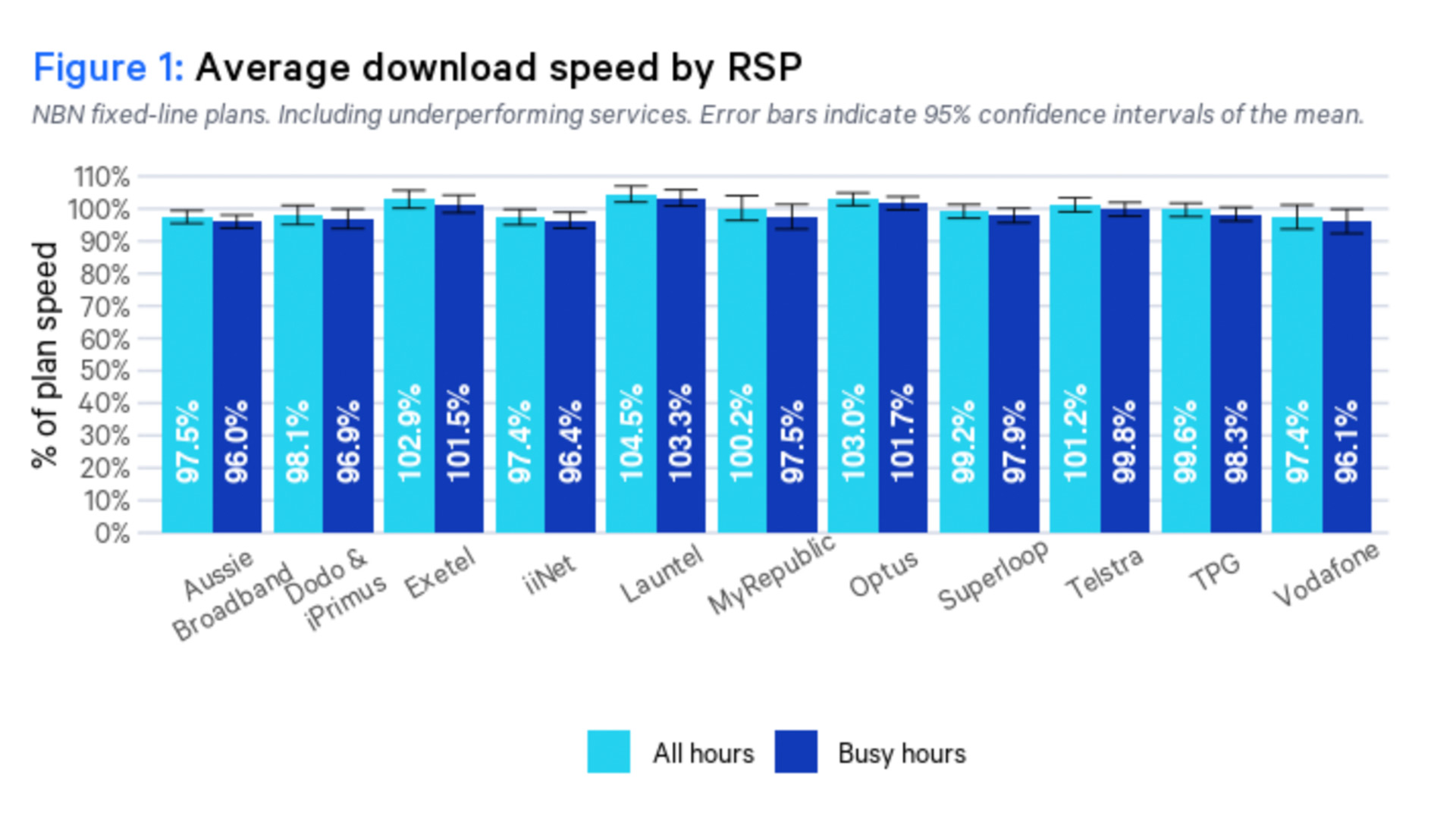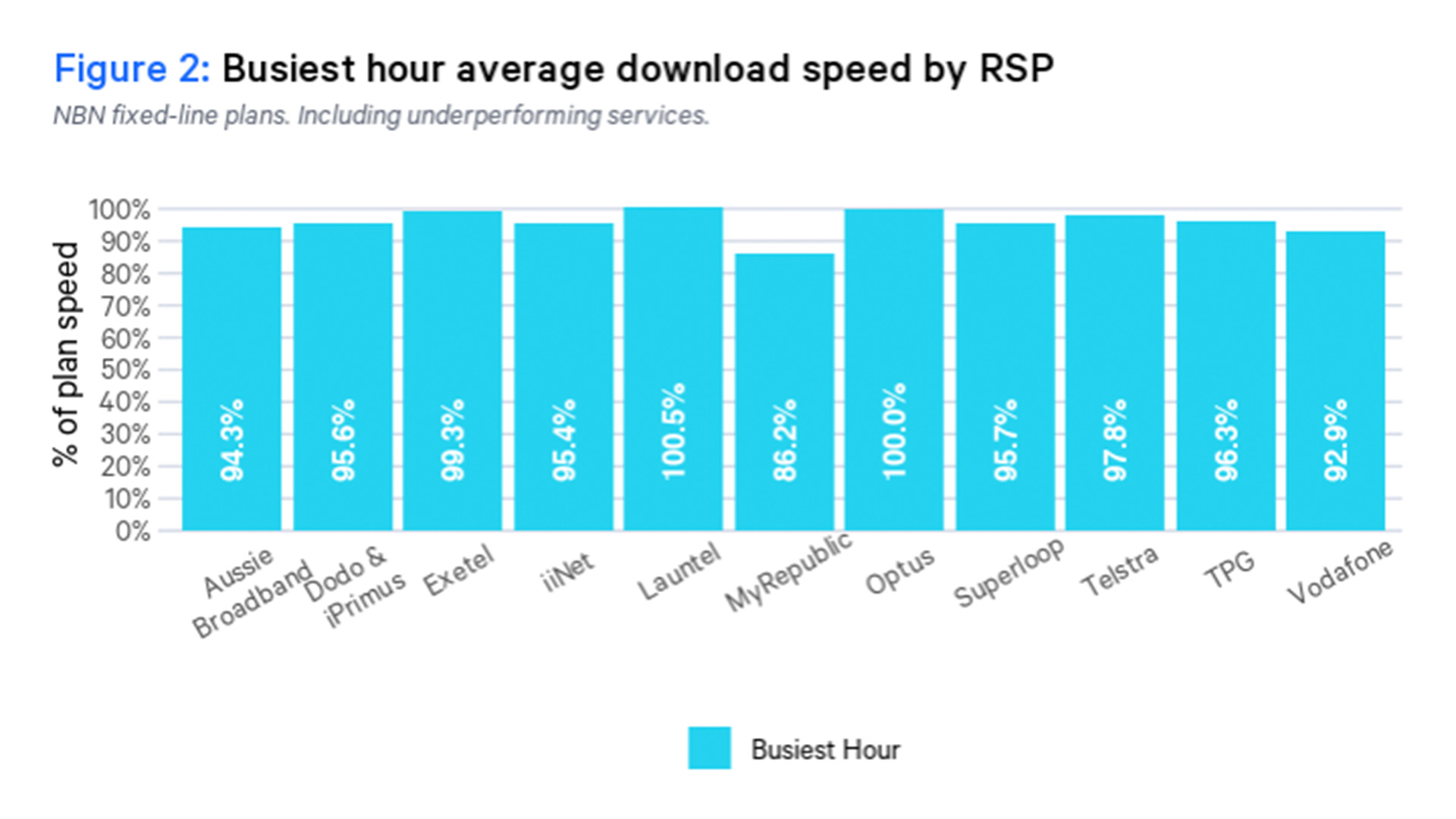An NBN provider you’ve never heard of just beat Telstra and Optus for speed
Tassie ISP takes the crown for download speeds in latest ACCC report

You might never have heard of Launtel, but this small Tasmanian NBN provider just took out the top spot in the Australian consumer watchdog’s quarterly broadband report. It performed better than the big players of Telstra, Optus and TPG, and even managed to knock reigning champion Exetel down to third place.
The Australian Competition and Consumer Commission (ACCC) found that Launtel (named for the city of Launceston, where the ISP is based) had the highest average download speed among the telcos measured, exceeding its advertised speeds by 4.5% across all hours, and beating it by 3.3% during the peak busy period (7pm-11pm).
Optus slotted into second place, with the ACCC’s data showing that it was marginally behind Launtel. Optus outperformed its advertised download speeds by 3% during all hours, and by 1.7% during the evening hours when demand is at its highest.
The consumer watchdog’s data – which was collected throughout August 2022 – paints a promising picture for NBN users. Across all the internet providers measured, the ACCC found that on average, fixed-line users got 99.7% of their plan’s promised speed during all hours. It dropped down to 98.2% during the peak period.
The ACCC’s commissioner, Anna Brakey, said the results show that bigger internet providers aren’t always better. “Launtel’s performance in August shows that emerging and smaller retailers can provide similar, if not better, performance than the larger telcos,” she said.
If you’re looking for one of the best NBN plans, Launtel might just be worth considering.

Gap between best and worst has narrowed
In a previous broadband report released in June of this year (which reported on data collected in February 2022), the ACCC found that MyRepublic had particularly poor performance among the telcos monitored. That report found its NBN plans only reached 84.4% of their promised speeds during the busy hours on average, and 92.5% across all times.
Sign up for breaking news, reviews, opinion, top tech deals, and more.
MyRepublic looks to have thankfully bounced back, with figures from the latest report showing the telco achieved 97.5% of its advertised plan speed during the peak period on average. Across all hours, the figure exceeds the advertised plan speed by 0.2%.
The report also looks at the busiest hour for fixed-line NBN plans, and in this metric, MyRepublic was trailing behind. On average, it only reached 86.2% of its promised plan speed during the busiest hours, when user demand is at its peak. It was an improvement on the June report, when it was found to reach 73% of download speed during the busiest hour.

Overall, the ACCC’s data also found that the gap between the lowest performing telco and the highest has narrowed. The August figures show the lowest performer delivering 96.1% of the maximum plan speed during busy hours on average, while the highest clocks in at 103.3%. Back in May, those figures sat at 88.8% and 102.3%.
“A combination of retailers sustaining strong performance and providing more accurate information in their advertising means that more consumers are getting what they pay for in their NBN plan,” says the ACCC commissioner.

Jasmine Gearie was previously an Ecommerce Editor at TechRadar Australia, with a primary focus on helping readers find the best mobile and NBN plans. During her time with TechRadar, she also reported on important telco news in Australia, and helped track down tech deals to help readers save money.